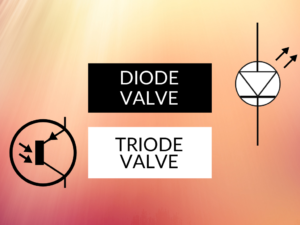PN Junction Diode vs Zener Diode: Understanding the Differences
Are you curious to know the dissimilarities between PN junction diode and Zener diode? This comprehensive article will delve into the details of both diodes, highlighting their characteristics, applications, and key variations. Whether you are an electronics enthusiast or just seeking knowledge, read on to uncover these differences!
What is a PN Junction Diode?
A PN junction diode is a semiconductor device that is formed by joining a p-type region to an n-type region in a single crystal of semiconductor material. It is the simplest form of diode and allows current to flow in one direction only. When a forward voltage is applied, it conducts, and when a reverse voltage is applied, it blocks the current.
Examples of PN Junction Diode
- 1N4148
- 1N4007
- 1N5408
Uses of PN Junction Diode
PN junction diodes have various applications, including:
- Rectification: Converting AC signals to DC signals.
- Signal Demodulation: Extracting information from modulated signals.
- Clipping and Clamping: Limiting or controlling waveforms.
What is a Zener Diode?
A Zener diode is a special type of PN junction diode that is specifically designed to operate in the reverse breakdown region. It exploits the phenomenon of zener breakdown, which occurs at a specific reverse voltage known as the zener voltage. Unlike regular diodes, it allows current to flow in reverse bias once this voltage is surpassed.
Examples of Zener Diode
- 1N4733A
- 1N5231B
- BZX85C24
Uses of Zener Diode
Zener diodes find applications in various areas, such as:
- Voltage Regulation: Stabilizing voltage levels.
- Overvoltage Protection: Safeguarding circuits from voltage spikes.
- Waveform Clipping: Limiting voltage amplitudes.
Differences between PN Junction Diode and Zener Diode
| Difference Area | PN Junction Diode | Zener Diode |
|---|---|---|
| Operational Mode | Works primarily in forward bias | Operates in reverse breakdown |
| Conduction Direction | Allows current flow in one direction | Allows current flow in both directions |
| Voltage Application | Used in applications where voltage regulation is not required | Used for voltage regulation and maintaining stability |
| Reverse Breakdown | Does not exhibit reverse breakdown | Operates in reverse breakdown region |
| Specific Voltage | No specific voltage for normal operation | Operates at a specific zener voltage |
| Current Flow | Low current flow due to small minority charge carriers | Higher current flow through the junction |
| Applications | Signal rectification, modulation, and clipping | Voltage regulation, protection, and waveform clipping |
| Symbol | Arrow pointing towards the diode | Zener diode symbol with a Z-shaped curve |
| Operational Stability | Stable under normal operating conditions | Exhibits a stable voltage across a wide range of currents |
| Breakdown Mechanism | Breakdown is due to high reverse voltage | Breakdown occurs at the zener voltage |
Conclusion:
In summary, a PN junction diode is a basic diode that allows current flow in one direction and is employed for applications such as rectification and modulation. On the other hand, a Zener diode can conduct current in reverse bias and is utilized for voltage regulation and protection purposes. Understanding these distinctions is essential for effectively choosing the appropriate diode for specific circuit requirements.
People Also Ask:
Here are some common questions about PN junction diode and Zener diode:
1. What is the difference between a diode and a Zener diode?
A regular diode operates primarily in forward bias, conducting current in one direction. However, a Zener diode is specifically designed to operate in the reverse breakdown region, allowing current flow in reverse bias once a specific voltage is surpassed.
2. What is the purpose of a PN junction diode?
A PN junction diode is used for applications such as rectification, signal modulation/demodulation, and waveform clipping.
3. How does a Zener diode regulate voltage?
A Zener diode regulates voltage by maintaining a constant voltage drop across it, even with variations in the current flowing through the diode.
4. Can a Zener diode be used as a rectifier?
While Zener diodes can perform rectification, they are not primarily used for this purpose. Regular diodes are more suitable for rectification due to their design for low forward voltage drop.
5. What is the symbol for a PN junction diode?
The symbol for a PN junction diode is an arrow pointing towards the diode, indicating the direction of conventional current flow.


